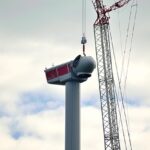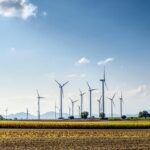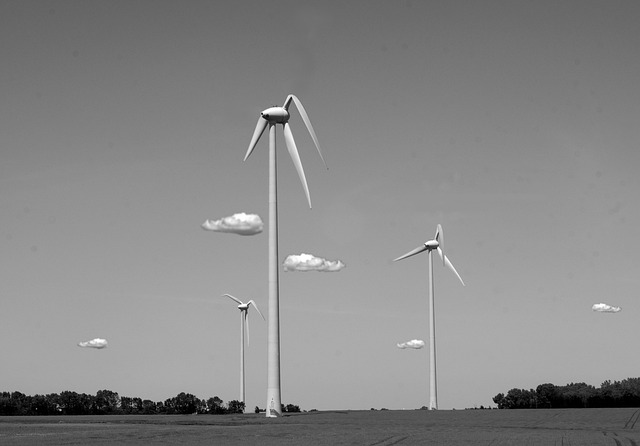Big Impact: The Rise of Local Wind Energy Solutions
As the global community increasingly grapples with the effects of climate change, local wind energy solutions have emerged as a significant player in the renewable energy landscape. This rise in localized wind energy initiatives not only offers sustainable electricity options but also presents communities with opportunities for economic growth, resilience, and energy independence. This article delves into the factors driving the growth of local wind energy solutions, their benefits, challenges, and the future of wind energy in the local context.
The Growing Demand for Renewable Energy
The urgency of climate change has galvanised nations around the world to transition away from fossil fuels towards cleaner energy sources. Wind energy, in particular, has gained momentum due to its numerous environmental benefits and the decreasing costs of technology associated with wind turbines. Unlike conventional forms of energy generation, wind energy produces no direct carbon emissions and significantly less air pollution, making it a crucial component of any comprehensive strategy to address climate change.
Moreover, the increasing prevalence of extreme weather events has underscored the vulnerabilities inherent in relying on centralized energy systems that are often subject to disruptions. Local wind energy solutions offer a decentralized approach that can enhance energy reliability, especially for communities in remote or underserved areas. This shift not only provides cleaner energy but also supports local economies and creates jobs.
Local Solutions: What They Are and How They Work
Local wind energy solutions encompass a range of applications, from small residential wind turbines to larger community-scale wind farms. These projects are typically designed to serve the energy needs of local populations instead of feeding into a centralized grid. The technologies can vary widely, adapting to specific local conditions, resources, and needs. Understanding the nuances of local wind energy solutions can help position communities to take advantage of this growing energy sector.
Residential wind turbines, for example, allow homeowners to generate their own electricity by harnessing wind energy on their property. This not only reduces reliance on the grid but can also lead to substantial savings on energy bills over time. Additionally, smaller wind projects can be combined with solar power to further enhance energy independence and resilience.
Community-scale wind projects are typically developed through partnerships between municipalities, cooperatives, or local businesses and can involve larger turbines that generate significant amounts of energy. These projects often operate on a shared revenue model, more equitably distributing the financial benefits among community stakeholders. They can also galvanize local support for sustainable energy initiatives, as residents take an active role in decision-making and energy production.
Benefits of Local Wind Energy Solutions
The benefits of local wind energy are multifaceted, affecting economic, environmental, and social dimensions. Understanding these advantages can help communities and policymakers make informed decisions regarding energy strategies.
Environmental Impact
One of the most prominent benefits of wind energy is its low environmental impact compared to fossil fuels. Wind turbines produce electricity without emitting greenhouse gasses or air pollutants, significantly reducing the carbon footprint of energy generation. Implementing local wind solutions contributes to lowering overall reliance on fossil fuels, thus playing a key role in combating climate change.
Economic Advantages
Investing in local wind energy projects can stimulate local economies. These initiatives create jobs during both the construction and operational phases, providing opportunities for skilled labor and bolstering the local workforce. The revenue generated from wind projects can be reinvested into community services such as education, infrastructure, and health care.
Furthermore, local wind energy can lead to price stability in energy costs, insulating communities from the volatility of fossil fuel markets. This stability can be particularly beneficial for local businesses and households that face unpredictable energy expenses.
Energy Independence and Resilience
Local wind energy solutions enable communities to generate their own electricity, providing a level of energy independence that is particularly valuable during crises. By decentralizing power generation, communities can mitigate the risk of outages and enhance their resilience to extreme weather events that can disrupt energy supply chains.
Moreover, communities can work towards meeting their energy needs more sustainably, aligning local energy consumption with renewable sources. This alignment fosters a sense of ownership among residents and can encourage further investments in sustainable infrastructure.
The Challenges Ahead
Regulatory Hurdles
Energy policies and regulations often reflect entrenched interests that favor traditional energy sources. Navigating local, state, and federal regulatory frameworks can pose significant challenges for communities interested in developing wind projects. Legislation needs to evolve to support renewable energy innovations and streamline the permitting process.
Community Engagement
The success of local wind energy solutions is intricately linked to community buy-in. Engaging local residents in the planning and development process can be challenging, especially if they have concerns about aesthetic impacts, noise, or changes to the landscape. Transparent communication and thorough community outreach can help alleviate these concerns and foster a sense of ownership.
Financing Projects
Securing funding for local wind projects is often a significant barrier. Many communities may lack the initial capital investment to construct and maintain wind infrastructure. Innovative financing mechanisms, including public-private partnerships, grants, and community investment, will be essential to making such projects a reality.
Future Trends in Local Wind Energy Solutions
The outlook for local wind energy solutions appears bright as technology continues to improve and public support for renewables grows. Several trends are emerging that could significantly impact the local wind energy landscape.
Technological Innovations
Advancements in wind turbine technology are making it feasible to generate power in a broader range of wind conditions. Smaller and more efficient turbines are increasingly being developed, allowing even small communities and individual homeowners to effectively harness wind energy. Innovations in energy storage will also complement wind solutions, enabling the effective use of wind energy even when the wind isn’t blowing.
Integration with Other Renewables
As local wind energy solutions proliferate, they are likely to be integrated with other renewable energy technologies, such as solar power. Hybrid systems can provide a more reliable energy supply by combining the strengths of each source. For instance, solar energy can supplement wind energy production during the day when wind speeds may be lower.
Policy and Community Support
As public awareness of climate change and the benefits of renewable energy increases, community leaders and policymakers are likely to prioritize local wind energy solutions. Supportive policies, educational initiatives, and incentives will play an instrumental role in fostering the growth of local wind projects.
Conclusion
Local wind energy solutions are uniquely positioned to play a vital role in the transition to a more sustainable energy future. They present opportunities to bolster economic growth, enhance energy resilience, and address climate change while empowering communities to take charge of their energy needs. As technology advances and societal support solidifies, the potential for localized wind energy generation will only continue to expand. Communities that embrace this opportunity will not only benefit today but will also pave the way for a cleaner, greener tomorrow.










